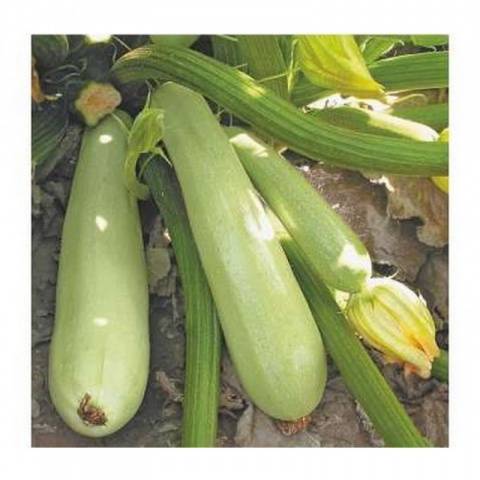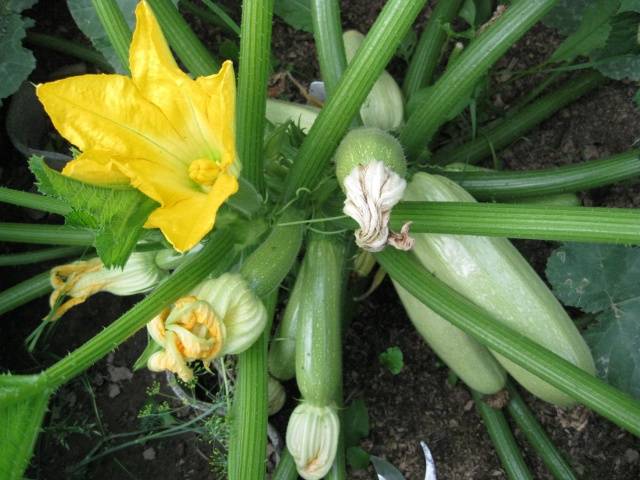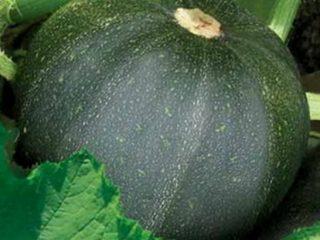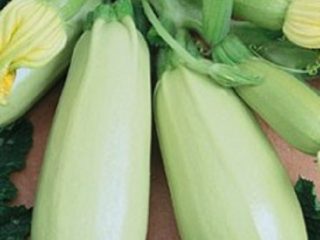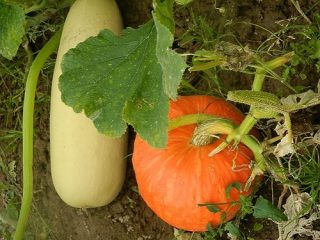Hybrid zucchini varieties have long won a place of honor not only in the plots, but also in the hearts of gardeners. By mixing the genes of two common zucchini varieties, they have increased productivity and resistance to diseases. They are unpretentious and undemanding to care for. Selective crossbreeding deprives hybrid varieties of the disadvantages of their parents, making them more versatile in use. One of the most popular representatives is the Sangrum F1 Zucchini variety.
Characteristics of the variety
Zucchini Sangrum belongs to early maturing hybrids. Its first crop can be harvested within 38 days from the moment of germination. The compact bushes of Sangrum F1 have small and medium-sized, highly dissected leaves. The whitish fruits of this squash are shaped like a cylinder. Their smooth skin is dark green in color, which is diluted with a slight spotting. They have an average size and weight up to 400 grams. The light green zucchini flesh is very tender. The dry matter in it will be only 7%, and even less sugar - 5.6%. This zucchini variety is ideal for all culinary ideas, including canning and cooking. squash caviar.
The value of the hybrid Sangrum variety lies in its consistently high yield and excellent taste of its fruits. In addition, it is able to grow well under unfavorable conditions and is not afraid of powdery mildew. Subject to agrotechnical requirements, the variety can yield a yield of up to 4.5 kg per square meter.
Growing recommendations
Sangrum is a very undemanding hybrid to care for. But, despite this, there are general recommendations for growing it, which will help to achieve a significant increase in yield. First of all, it is the soil. It shouldn't be sour. A soil with a neutral acidity level will be optimal.
If the soil on the site is acidic, this is not a reason to put the seeds of the Sangrum zucchini on the shelf. Liming the soil will help in this situation. The most popular products are crushed limestone and slaked lime.
The composition of the soil is also important. Depleted poor soil will not be able to provide the zucchini bushes with proper nutrition, which will affect the harvest. The land can not be fertilized if it is possible to plant zucchini after crops such as:
- potatoes;
- bow;
- legumes.
During their growth, the soil is saturated with all the microelements necessary for excellent growth of zucchini.
If this is not possible, then it is better to fertilize the soil with organic or mineral fertilizers. It is better to plan fertilization of the land during the autumn work on the site.
In addition, it is better to opt for well-lit sunny areas. All of these recommendations are optional. But their implementation will provide the gardener with a rich harvest.
You can plant a hybrid Sangrum variety in the following ways:
- Through seedlings, which must be prepared from April.
- Through sowing with seeds, which is produced in May. Moreover, they are planted in holes no deeper than 3 cm.
The Sangrum F1 harvest begins from July to August.
